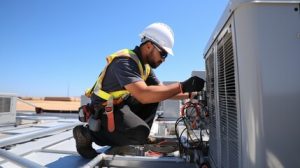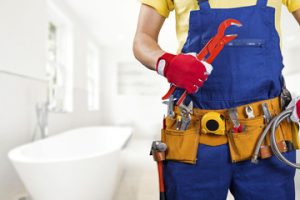Antiques hold a special place in many homes, not only because of their monetary value but also due to the emotional significance they often carry. Whether it is a century-old dresser handed down through generations or an intricately designed chair that reflects timeless craftsmanship, antique pieces deserve proper care to maintain their authenticity and beauty. Professional Antiquario Roma restoration services play a crucial role in ensuring these items remain structurally sound, visually appealing, and historically accurate for years to come. With the right expertise, restoration specialists bring new life to aged items while preserving their original charm.

In today’s world, where mass-produced products dominate the market, antiques offer uniqueness and character that cannot be replicated. Maintaining such pieces requires specialized knowledge of materials, construction methods, and best practices for preservation. This is why many collectors, homeowners, and enthusiasts rely on experienced restoration professionals to revive their treasured items and enhance their longevity.
Antique restoration is a delicate blend of science, art, and skill. Rather than simply applying modern fixes, professionals study the item’s history, craftsmanship, and materials before selecting the appropriate restoration techniques. They aim to maintain the structural and aesthetic integrity of each object, ensuring it remains faithful to its original appearance while also improving its durability. This level of care is essential in preserving the value of antiques, whether emotional or financial.
One of the most significant advantages of professional antique restoration services is the careful assessment process. Restoration specialists take the time to evaluate the condition of the piece, including any damage, weakened joints, missing components, or worn finishes. This assessment helps them determine the best approach, whether it involves repairing, reassembling, refinishing, or conserving the item. It also enables professionals to determine whether the piece would benefit more from restoration or conservation, two processes that require distinct approaches.
Conservation focuses on stabilizing the item and preventing further deterioration, often leaving visible signs of aging intact. Restoration, on the other hand, aims to return the item to its previous condition, enhancing both appearance and functionality. Both practices are valuable and often combined to ensure the best outcome for antique furniture, artwork, and decorative items.
Professional skills and specialized tools are essential components of effective antique restoration. Experts have access to materials that closely match the original finishes, woods, and hardware used in older pieces. They understand how different types of wood react to moisture, temperature changes, and various restoration methods. This knowledge is vital to avoid further damage during the restoration process. Additionally, restoration specialists frequently work with antique varnishes, stains, adhesives, and decorative elements, ensuring they choose the right products to achieve a seamless result.
A common area of antique restoration involves furniture repair and refinishing. Over time, furniture can suffer from loose joints, faded finishes, scratches, cracks, or missing components. Professional restorers use traditional joinery methods, hand tools, and historically accurate materials to repair these issues. They carefully strip old finishes when necessary, apply new stains or varnishes that match the original tone, and restore the piece’s original luster. By doing so, they maintain the beauty and functionality of the furniture while safeguarding its historical authenticity.
Antique restoration services also extend to a wide variety of collectible items, such as clocks, sculptures, frames, and decorative objects. Each item requires a unique approach and a deep understanding of its materials and construction. For instance, antique clocks may require intricate mechanical repairs, while frames may need gilding restoration or structural reinforcement. Restorers often collaborate with craftsmen who specialize in specific areas, ensuring each item receives the highest level of care.
Another essential aspect of antique restoration is preserving intricate details. Many antiques feature hand-carved elements, inlays, ornate decorations, or delicate hardware. These embellishments can become loose, worn, or damaged over time. Skilled restorers have the patience and expertise to re-create missing parts, replicate carvings, and restore decorative patterns using period-appropriate tools and materials. This meticulous attention to detail helps preserve the original character of the piece, ensuring it retains its aesthetic and sentimental significance.
In addition to physical repairs, antique restoration services include surface cleaning and protection. Over many years, antique pieces accumulate dirt, grime, smoke residue, and environmental contaminants that diminish their appearance. Professional restorers use gentle, non-abrasive cleaning solutions and techniques to remove buildup without damaging the original finish. They also apply protective coatings that enhance the item’s durability while preserving its authentic look. This cleaning process helps antiques regain their natural color and beauty, making them suitable for display and long-term use.
For antique homeowners and collectors, one of the biggest concerns is maintaining or increasing the value of their pieces. High-quality restoration can preserve or even enhance an antique’s value, especially when performed by knowledgeable professionals who follow industry best practices. Poor or incorrect restoration, however, can significantly reduce a piece’s worth. This reinforces the importance of choosing the right restoration expert who understands not only the technical skills but also the historical context of the item.
Those seeking professional antique restoration services often look for a few key qualities in their chosen specialist. Experience is crucial, as it reflects the restorer’s familiarity with a wide variety of materials and challenges. Many customers also look for restorers who prioritize authenticity and precision, ensuring the final results remain true to the piece’s original craftsmanship. Additionally, professionalism, transparent communication, and a detailed project plan are important factors in delivering high-quality results.
When selecting a restoration service, it is helpful to ask questions about the specialist’s approach, materials used, and expected timeline. A reputable restorer will always provide clear explanations and recommendations. They may also offer before-and-after photos of previous projects, allowing customers to assess the quality of their work. Some professionals even provide customized restoration plans tailored to the specific condition and needs of each item.
Proper care and maintenance after restoration are equally important in preserving antiques. Owners should keep restored pieces in stable environments where temperature and humidity levels do not fluctuate too drastically. Direct sunlight, moisture, and excessive handling can cause fading, cracking, or warping over time. Simple steps such as regular dusting, avoiding harsh cleaning chemicals, and protecting surfaces with pads or covers can greatly contribute to the longevity of antique items. Many restoration professionals also provide guidance on proper storage, cleaning, and care to ensure clients can protect their items long after the restoration is completed.
In addition to preserving cherished items, antique restoration contributes to sustainability. Instead of discarding old furniture or décor due to damage or wear, restoring them reduces waste and prevents unnecessary production of new items. This environmentally friendly approach not only conserves materials but also celebrates craftsmanship that may no longer be common in modern manufacturing. Each restored antique becomes a piece of history carried into the future, continuing its story through generations.
Antique restoration services play a critical role in preserving cultural heritage and personal memories. Every piece, whether modest or ornate, tells a story about the past and the people who cherished it. Through professional restoration, these stories remain alive, and the items can continue to be appreciated for their beauty, craftsmanship, and historical significance. Whether someone owns a family heirloom, a unique collectible, or an antique discovered through years of searching, ensuring its preservation is a meaningful investment.
Ultimately, entrusting treasured pieces to professional antique restoration services ensures they receive the expert care and attention needed to maintain their integrity and charm. With the right combination of skill, craftsmanship, and dedication to authenticity, restorers help antique items last far beyond their expected lifespan. This makes it possible for current owners to enjoy their beloved pieces today while ensuring future generations can appreciate their historical and sentimental value. Through restoration, antiques remain not just objects of the past but cherished parts of the present and future.
If you have a piece that holds deep value or simply showcases remarkable craftsmanship, professional restoration services offer the ideal solution to preserve its beauty and legacy. By choosing skilled experts who understand the delicate balance between restoration and authenticity, you can ensure your treasured items continue to shine for years to come.






